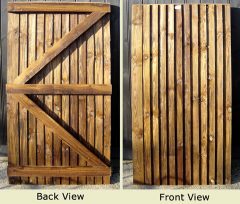Choosing Fence Panels | Options for Timber Buildings | How to Install Panel Fencing | Assembling Timber Buildings | How to Guides
Choosing Fence Panels
Advice on choosing fence panels and posts, working out how many you need and what accessories are available.
Options for Timber Buildings
Information on cladding, frame and treatment options for all of our sheds and other timber buildings.
How to Install Panel Fencing
A basic guide for those planning to install their own fencing. If you would prefer to use our installation service please contact us.
Assembling Timber Buildings
Assembly instructions for timber building available to download in PDF format.
How to Guides
Guides to how to build, hang or fit a range of products including gates, fence panels, trellis, arbours, pergolas and arches.
For more tips and guidance visit our News Blog.
A note about wood
We use mainly softwood for strength, weather resistance and good weight bearing ability. We use only high quality softwood timber from sustainable sources. We only select timber that is suitable for purpose and durable, however it must be stressed that wood is a natural product and will include characteristics which are not flaws but part of its beauty, for instance:
- KNOTS – Knots are a naturally occurring feature of timber that are present where branches have been cut from the tree before it’s peeled and sawn. Knots should be expected on the finished product.
- SWELLING AND SHRINKAGE – Timber swells in moist humid conditions and shrinks in dry arid conditions. This effectively changes the volume of the timber and the parts closest to the surface will dry out quicker than the centre. This can cause splitting as the timber dries out in hot weather and in wetter weather these splits may reduce or “heal”. These changes in the structure of the timber may also cause it to twist or distort which is, of course, impossible to predict in manufacture but will have no effect on the structural integrity of the finished piece.
- RESIN – Resin is a naturally occurring substance in softwoods and as the wood dries it may rise to the surface. If undesirable it can be removed with a cloth soaked in turpentine or left to harden and removed with a scraper.
- VARIATION IN COLOUR – No two trees are alike and this means that variations in grain density will cause the wood to be more or less absorbent; this in turn affects the way the preservative is absorbed by the wood which will accordingly be lighter or darker. These colour differences will become less pronounced as the timber is exposed to the weather but a consistent flat colour without variation will never be achieved.
- SPOTTING OR MOULDY LOOKING AREAS – Occasionally small green or white spots rise to the surface of pressure treated timber. These are specks of resin that have been dyed by the preservation treatment. They are not detrimental and can usually be cleaned off with a damp cloth.


